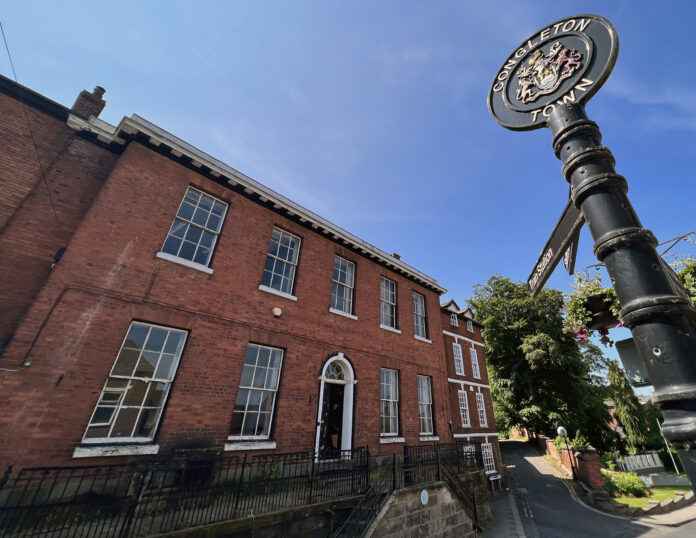Work is underway to transform one of Congleton’s most historic buildings into six “luxury” apartments for supported living.
The grade-two listed Georgian-fronted Bradshaw House on Lawton Street was the site where John Bradshaw, the judge who condemned Charles I to death, lived. The imposing building has been derelict for some years having last been used as a council-run day care centre.
An unsuccessful attempt was made a few years ago to use it as a larger home for Congleton Museum.
Bradshaw House was acquired by Uttoxeter-based Kingsgate Developments in 2021 and working in partnership with Radis Community Care of Tamworth, the conversion is now underway.
The developers have assured that they are “doing everything they can to protect the structure and integrity” of the building.
Once the 12-month building project is complete Bradshaw House will be home to six adults with additional needs.
Adam Taylor, managing director at Kingsgate Developments, said: “This is not your usual apartment scheme. Bradshaw House is being converted into six luxury apartments with a twist. The scheme is specifically designed as a supported living scheme with the latest assisted technology.
“We’re doing everything we can to protect the structure and integrity of the building including revamping the original doors so that they’re automated. We are ensuring this beautiful property isn’t compromised at all by being brought up to today’s regulatory standards.” Gavin Dixon, Radis Community Care’s regional support manager for supported living services, said: “Supported living is the least restrictive model of support and a great way for people who experience additional needs to live as autonomously as possible.
“Once the renovations are complete we will be providing a team of dedicated support workers who will help them with whatever they need, from personal care to help out and about in the community.” The historic Bradshaw House will also be made more environmentally friendly. Improvements include thermally upgrading external walls and floors and bringing the rest of the building in line with modern housing standards, while protecting the building’s authenticity.
Mr Taylor said: “Listed buildings are exempt from EPC (Energy Performance Certificate) ratings but we are doing as much as we are able to bring the property into the modern day, making it as sustainable as possible.” It is hoped all work to the property will be completed by autumn next year.
A heritage statement with Kingsgate Development’s planning for the conversion gave an interesting snapshot of the history behind Bradshaw’s House.
The property occupies a number of the original burgage plots which formed the medieval nucleus of the town.
The site also occupied Cole Hill House, which was a timber-framed building, originally owned by Regicide, Judge John Bradshaw who was elected mayor in 1637-38 and High Steward in 1655. Bradshaw subsequently became president of the Court that tried and ordered the execution of Charles I.
By the mid-18th century the house had become the home of John Sydebotham and in 1820 was part of a 61-acre estate, comprising of nine smaller houses, two farms and a water powered silk mill.
When William Loundes inherited the property, he constructed the dominating Georgian property known as Bradshaw House, which was the last Georgian merchants House to be built in the town.
During the mid-19th Century the house was occupied by relatives of Sir Thomas Reade and at the end of the 19th century, in conjunction with the adjacent property, the house became one of the town’s medical practises.
Following the death of the doctor in 1939, the house became a wartime children’s nursery.



